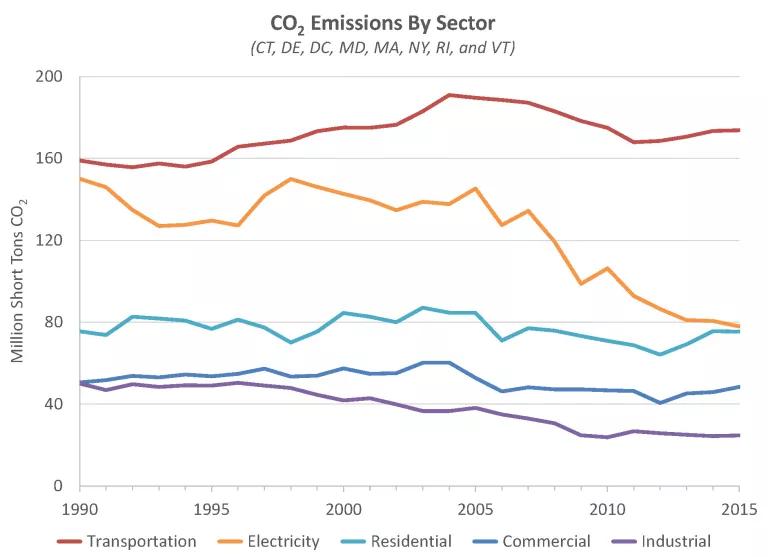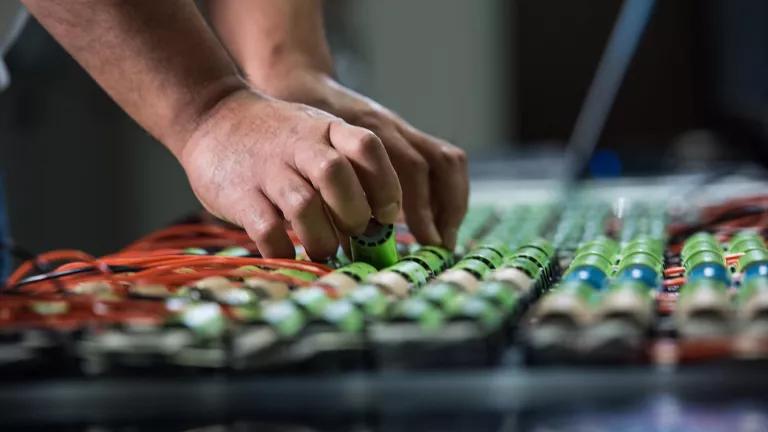Northeast and Mid-Atlantic States Seek to Modernize Mobility

Who hasn’t had a day ruined by a traffic jam or a delayed train, bus, or subway when trying to get their kids to school, get to work, or get home? Or coughed when a diesel truck belched a cloud of dirty exhaust in your face as you went for a jog or walked with your kids to the park or grocery store?
Seven Northeast and Mid-Atlantic states and Washington, D.C. are committed to figuring out how to make those days better, and so are launching a public conversation about how we can make our transportation system cleaner, less polluting, and more efficient, and ensure it does a better job getting everyone around no matter where they live or how much money they make.
To that end, earlier today, Connecticut, Delaware, D.C., Maryland, Massachusetts, New York, Rhode Island, and Vermont announced the first in a series of public listening sessions they will hold across the region on improving efficiency; reducing traffic jams; and providing more options for residents to get where they need to go. Potential solutions could range from better and more reliable buses and trains to smarter planning, enabling more people to get out of their vehicles, live in walkable and bikeable communities, and take advantage of new and innovative technologies, services, and economic opportunities. A key part of this conversation will focus on ways to achieve these benefits while cutting vehicle tailpipe pollution, which causes everything from asthma to climate change.
The first regional listening session will be held in Albany, New York, on April 9, 2018. The states will announce dates and locations for additional meetings soon. Today’s announcement and the upcoming meetings follow through on a commitment the states made last fall to undertake this important conversation.
The Challenge
This conversation couldn’t come at a better time. Across the region, residents face numerous obstacles from deteriorating subways, roads, and bridges to traffic jams and air pollution. Many residents in urban, suburban, and rural areas lack access to cleaner, affordable, and convenient modes of transportation to get to jobs, schools, doctors’ appointments, and more.
We Have the Solutions: States Can Lead
We have the technology and know-how, but we need state leadership to achieve the benefits of clean, modern, and accessible transportation solutions. Many of the participating states have been engaged in state-level conversations, such as transitioning to cleaner, electric vehicles, and improving public transportation. These conversations will and should continue, but by also engaging in a regional conversation, the states could unlock additional solutions and efficiencies, just as they’ve done in the power sector by tackling pollution regionally over the last decade.
Our Transportation System Faces Numerous Challenges
We’ve been moving people and goods in the Northeast and Mid-Atlantic region in essentially the same way—using internal combustion engines and much of our current infrastructure—for a century, even as other areas of the economy, like telecommunications, have innovated by leaps and bounds. Much of our infrastructure is aging and increasingly experiences problems, from structurally deficient bridges to subway systems that require major overhauls.
Our current system is also incredibly dirty. Tailpipe pollution from cars and trucks is the largest source of nitrogen oxides (NOx) that cause bad air days, leading to asthma attacks, respiratory illness, and even premature deaths.

The gasoline and diesel we use to fuel our vehicles is also the largest source of climate-wrecking carbon pollution in the region—emitting roughly twice as much as power plants. What’s more, virtually all these fuels are imported from other states and foreign countries, transferring money out of the regional economy rather than keeping our valuable energy dollars here at home.
According to the American Lung Association, pollution from cars and trucks cost our region more than $15 billion in health and climate damages in 2015 alone.
We Can Build a Cleaner, Better, and More Modern Transportation System
We have the tools we need to address these problems while creating transportation options that are cleaner, more modern, and work better for everyone.
Transportation is on the cusp of a major transition, with more efficient cars and trucks, new technologies such as electric vehicles and zero-emission buses, services such as ride sharing, and a renewed emphasis from planners on creating accessible, livable, walkable, and bikeable communities. One study, by the Georgetown Climate Center, found that investing in a clean and modern transportation system through 2030 in the broader Northeast and Mid-Atlantic region (also including Maine, New Hampshire, New Jersey, and Pennsylvania) could:
- Create 1.1 million years of additional full-time work in the region,
- Add $144 billion to the economy,
- Increase personal disposable income by $109 billion, such as by reducing expenditures at the pump and wasted time in traffic jams, and
- Generate more than $62 billion in public health and safety benefits, including preventing 42,850 asthma attacks and saving 6,653 lives from reduced pollution and fewer accidents.
But to achieve these and other benefits, state and local leaders, communities, and businesses must rethink the old ways of doing things and work together to create a system that is more modern and innovative. And we must ensure this transition is just, providing benefits to urban, suburban, and rural residents, as well as improved options and opportunities for low- and middle-income households and underserved communities, so that everyone succeeds.
Listening Sessions Will Provide Opportunities for Citizen Input on Northeast and Mid-Atlantic States' Plans
The states behind today’s announcement are taking an important step toward building this future by initiating a broad discussion with the public about what we can do to modernize transportation and capture new economic opportunities. It is critical that citizens participate in this process and tell our leaders we want clean, modern, efficient, and accessible transportation options for all.



